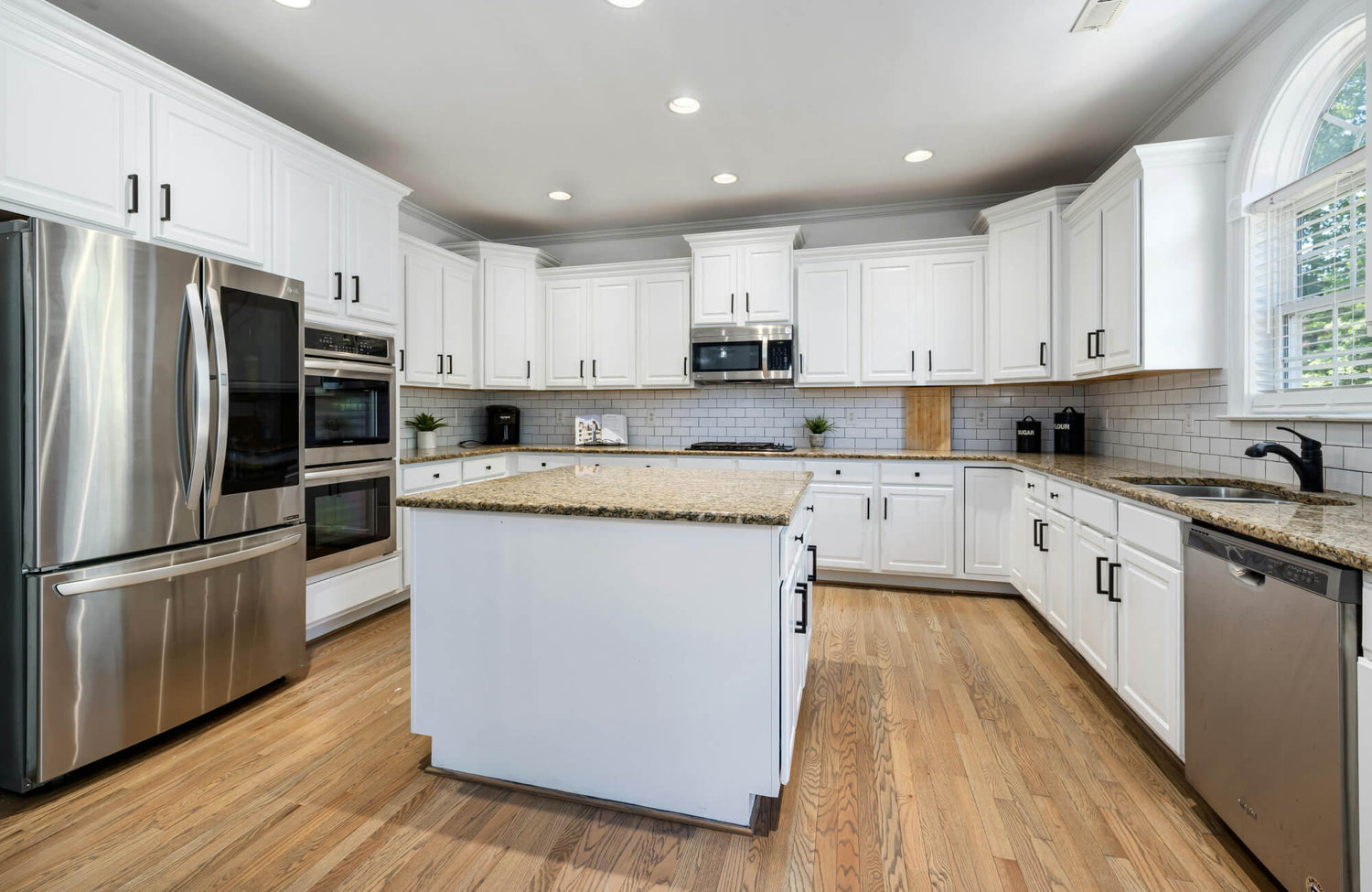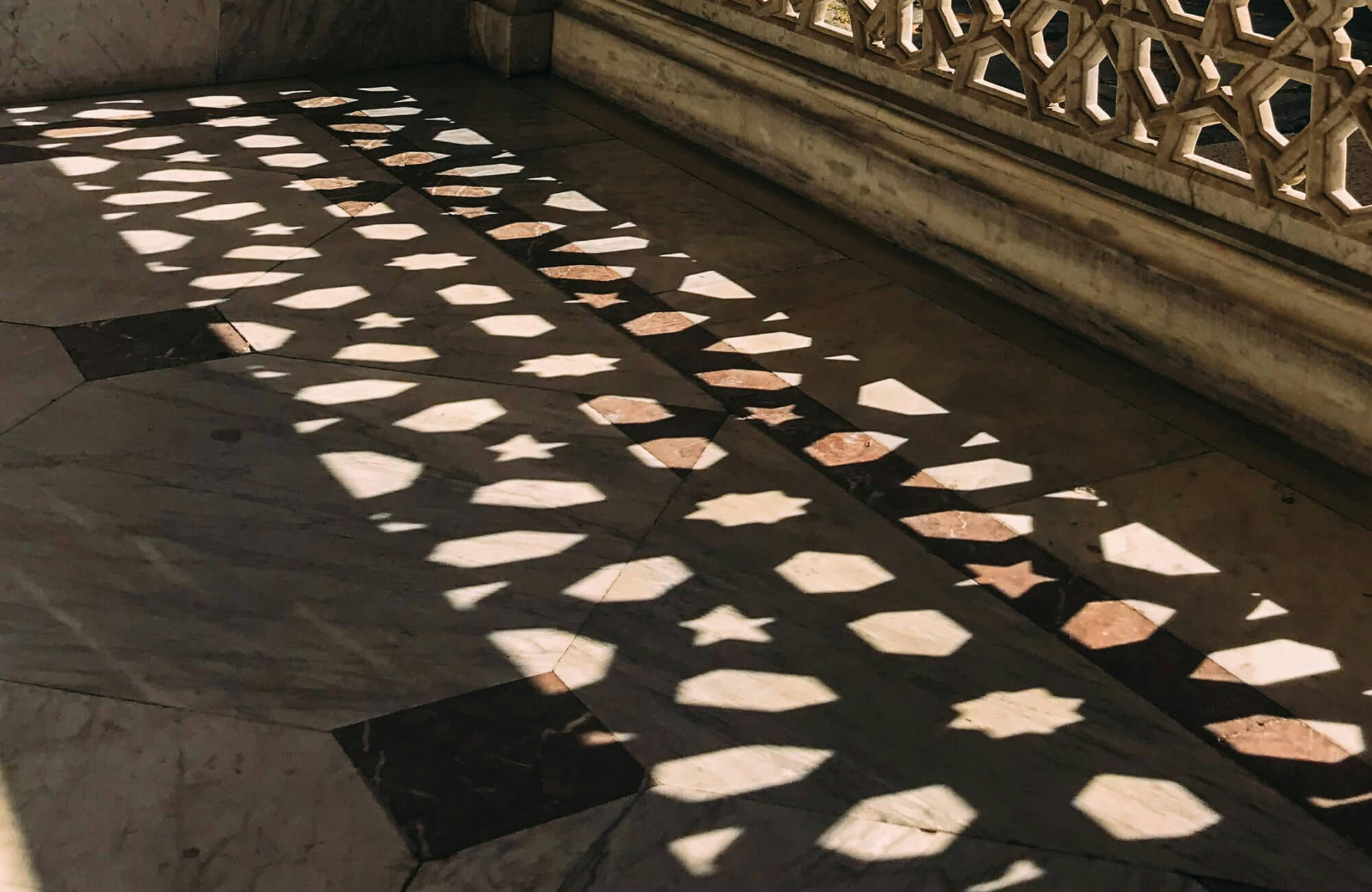Wood flooring, with its timeless elegance and warm, natural aesthetic, has long been a popular choice for living rooms and bedrooms. However, the question of whether wood flooring is suitable for kitchens has often sparked debate. While traditionally, kitchens were the domain of more durable materials like tile or linoleum, the growing trend of open-concept living has blurred the lines between rooms. As a result, many homeowners are considering wood flooring as a stylish and functional option for their kitchens.

The Pros and Cons of Wood Flooring in Kitchens
The decision to install wood flooring in a kitchen involves weighing the potential benefits against the potential drawbacks.
The Pros
Here are the advantages of wood flooring in kitchens:
Aesthetic Appeal
Wood flooring brings a sense of warmth, elegance, and natural beauty to any space, including kitchens. Its rich grain patterns and warm tones can create a sophisticated and inviting atmosphere.
Durability
When properly installed, sealed, and maintained, hardwood flooring can be incredibly durable. It can withstand heavy use and resist scratches and dents, making it a long-lasting investment.
Comfort
Wood flooring provides a comfortable and cushioned surface underfoot, reducing foot fatigue, especially when standing for extended periods. It also helps to insulate the floor, making it warmer in colder months.
The Cons
Here are the disadvantages of wood flooring in kitchens:
Water Damage
Wood is susceptible to water damage, and kitchens are prone to spills and splashes. If water is not cleaned up promptly, it can seep into the wood, causing warping, swelling, and even mold growth.
Maintenance
Wood flooring requires regular cleaning and maintenance to keep it looking its best. This includes sweeping, mopping, and periodic refinishing. Neglecting these tasks can lead to premature wear and tear.
Cost
Wood flooring is a significant investment, with material costs ranging from $3 to $12 per square foot, depending on the type of wood. Professional installation also typically adds $4 to $8 per square foot. Periodic refinishing further contributes to the overall expense, making it essential to account for both initial and long-term costs.

Choosing the Right Wood Species
The choice of wood species can significantly impact the appearance, durability, and maintenance requirements of your kitchen floors.
Hardwoods vs. Softwoods
Hardwoods, such as oak, maple, and hickory, are renowned for their durability and resistance to wear. These species are ideal for busy areas, with oak being a particularly popular choice due to its hardness, attractive grain patterns, and ability to endure heavy use. Maple, which is even harder than oak, offers a sleek, contemporary appearance, making it a favorite for modern interiors. Hickory, known for its striking grain and exceptional hardness, provides both strength and visual appeal, making it well-suited for areas that demand both functionality and style.
Softwoods like pine and fir, on the other hand, are less durable and more prone to dents and scratches, making them better suited for lightly used areas. However, their affordability and warm, rustic charm appeal to homeowners seeking a budget-friendly option with a cozy aesthetic. While not typically recommended for kitchens or other high-use spaces, softwoods can be a viable choice for bedrooms or decorative applications where heavy wear is less of a concern.
Exotic Woods
Exotic woods like teak, bamboo, and Brazilian cherry offer unique beauty and durability. Teak, for instance, is highly resistant to water damage and decay, making it an excellent choice for humid environments. Bamboo, a fast-growing, renewable resource, is also highly durable and water-resistant. However, exotic woods can be more expensive than domestic hardwoods and may require special care and maintenance.

Protecting Your Wood Floors
Proper maintenance and protective practices are essential to ensure the longevity and beauty of your wood floors.
Regular Cleaning and Maintenance
Consistent cleaning and maintenance are the foundation for preserving wood floors. Daily sweeping removes dirt, dust, and debris that could scratch the surface, while weekly mopping with a damp mop and a mild cleaning solution helps eliminate remaining grime. However, it’s important to avoid excessive water to prevent damage. Periodic deep cleaning and waxing every 6-12 months can protect the finish and restore shine, and consulting a professional for the best products and techniques ensures optimal results.
Preventing Water Damage
As previously highlighted, protecting wood floors from water damage is equally important. Spills should be cleaned up immediately to stop water from seeping into the wood and causing harm. Adding moisture-wicking rugs in busy areas also helps absorb moisture and adds an extra layer of protection. Additionally, avoiding standing water on the floor is essential, as pooling can lead to warping and long-term damage.
Protecting Against Scratches and Dents
Protecting your wood floors from scratches and dents involves several preventative measures. Furniture pads should be placed under heavy furniture to prevent damage when moving or shifting items, while placing doormats at entrances can help trap dirt and debris, reducing the risk of scratches. Wearing high-heeled shoes on wood floors should also be avoided as they can easily dent or damage the surface. Additionally, trimming your pet's nails and using area rugs in busy areas provide extra protection against wear and tear.
Alternative Flooring Options for Kitchens
While wood flooring can be a beautiful and durable choice for kitchens, it's not the only option. Here are some alternative flooring materials that are well-suited for this busy, moisture-prone area:
Engineered Wood Flooring
Engineered wood flooring is a versatile and popular alternative to solid hardwood, offering both practicality and aesthetic appeal. It is constructed with multiple layers of wood and topped with a real wood veneer, providing enhanced stability and reducing the risk of warping or cupping compared to solid hardwood. Its increased moisture resistance also makes it a better choice for areas like kitchens and bathrooms where humidity levels may fluctuate.
Installation is another advantage, as engineered wood supports various methods, including floating installation, which is faster and easier than traditional nail-down or glue-down techniques. Additionally, it is often more affordable than solid hardwood, particularly for exotic species, providing a cost-effective way to achieve a luxurious look. However, it’s important to consider its limitations. Engineered wood cannot be refinished as many times as solid hardwood, which may reduce its lifespan in busy areas. Their quality also varies widely, so selecting a reputable brand and professional installer is crucial to ensure durability and long-term satisfaction.
Wood Look Tile Flooring
Wood look tile flooring is a classic choice for kitchens due to its durability and water resistance. Porcelain planks are especially popular, as they are available in a wide range of colors, patterns, and finishes to suit various styles. They can replicate the appearance of different wood types, including the rich grains of oak, exemplified by the Preston 8x48 Matte Porcelain Tile in White Oak, the rustic charm of pine, the luxurious tones of teak, and the deep, dramatic hues of umber. This versatility allows homeowners to achieve their desired aesthetic while enjoying the practical benefits of modern tile.
In addition to their visual appeal, wood look tiles are easy to clean and maintain, standing up to heavy use, frequent spills, and scratches, perfect for busy kitchens. They are also often more cost-effective than traditional hardwood flooring, providing a durable and stylish solution at a fraction of the price. For added warmth and comfort, consider installing radiant heating beneath the tiles or using area rugs and cushioned mats in high-activity areas, such as near the sink or stove. These enhancements not only improve comfort but also maintain the space’s functionality and style.
Vinyl Flooring
Vinyl flooring is a budget-friendly option that offers durability, water resistance, and a variety of styles, including wood-look finishes. It's easy to install and maintain, and it's resistant to scratches, dents, and fading, making it a practical choice for busy kitchens. However, vinyl flooring may not have the same level of warmth, natural beauty, or texture as hardwood, and it can feel less luxurious underfoot. Additionally, lower-quality vinyl may be prone to tearing, and some products can emit VOCs (volatile organic compounds), which might impact indoor air quality. Despite these considerations, its affordability and practicality make it a popular flooring option.
Laminate Flooring
Laminate flooring is another affordable and durable option for kitchens. It's made up of multiple layers, including a wear layer, a decorative layer, and a core layer, providing water resistance, scratch resistance, and easy cleaning. Available in a wide range of styles, including wood, stone, and tile looks, laminate offers great versatility for kitchen designs. However, this flooring choice may not be as water-resistant as some other options, and prolonged exposure to moisture can cause warping or swelling, especially in lower-quality products. It can also feel harder underfoot compared to other flooring types and may not provide the same level of authenticity or warmth as natural materials. Choosing a high-quality product specifically designed for busy areas can help mitigate these concerns and ensure long-lasting performance.
Conclusion
Wood flooring can undoubtedly add elegance and warmth to a kitchen, elevating its overall aesthetic and charm. However, it is important to carefully consider the pros and cons before making a choice. While solid hardwood offers unmatched natural beauty and durability, it demands diligent maintenance and protection from water damage. Engineered wood, on the other hand, provides a more stable and affordable alternative, though it may lack the timeless luxury of solid hardwood.
Another excellent option is wood look porcelain tile, which combines the appearance of wood with the durability and water resistance of modern tile, making it ideal for busy kitchens. Ultimately, the best choice will depend on your lifestyle, budget, and design goals. For more personalized guidance or design consultation, reach out to Edward Martin to explore options and create a kitchen that perfectly reflects your style and needs!








